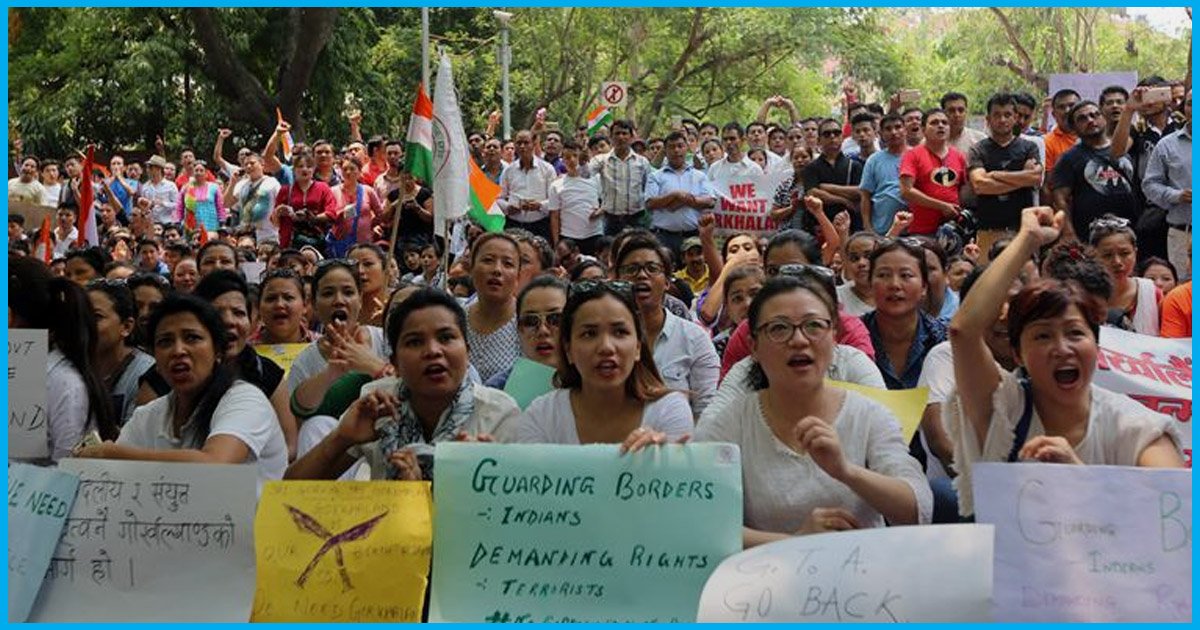
Gorkhaland Protests Come To An End After 104 Days, Know About The Crisis & People’s Struggle
27 Sep 2017 7:48 AM GMT
Editor : Pooja Chaudhuri
The only fiction I enjoy is in books and movies.
The Gorkha Janmukti Morcha (GJM) announced on Tuesday, September 26, it was calling off the indefinite strike in Darjeeling and Kalimpong hills for the separate state of Gorkhaland.
GJM Chief Bimal Gurung decided on the move at the request of Home Minister Rajnath Singh who promised an official meeting.
“Union Home Minister Rajnath Singh asked the Union Home Secretary to convene an official level meeting in the Ministry of Home Affairs within a fortnight to discuss all related issues,” said the Home Ministry in a statement on Tuesday.
“In a democracy, dialogue is the only way out to resolve any problem. Solutions can be found through restraint, mutual dialogue and within the legal ambit. I have asked the Home Secretary to convene an official level meeting in the Home Ministry within a fortnight to discuss all related issues. I also appeal to the GJM and its leader Shri Bimal Gurung to withdraw the ongoing bandh and to help create a conducive atmosphere for allowing normalcy to return to the area, particularly in view of the festive season,” added Home Minister Singh in the statement.
Earlier on September 20, West Bengal Chief Minister Mamata Banerjee had formed a new body called ‘Board of Administrators (BoA)’ for Darjeeling hill districts. In a major setback to Gurung, she had appointed revel GJM leader Binay Tamang as its chairman. The BoA would look into the hill affairs in Darjeeling till the scheduled election of Gorkhaland Territorial Administration (GTA).
The GTA is a semi-autonomous administrative body for the Darjeeling and Kalimpong hills in West Bengal. After three years of agitation for Gorkhaland, the GJM had reached an agreement with the state government to form the body in 2012.
Background
The protests started when, on May 16, West Bengal Chief Minister Mamata Banerjee announced to make Bengali language compulsory in all schools from Class I to Class IX, including private English-medium schools, of the state. Most schools already had the language as an optional subject, but making it mandatory was seen as ‘linguistic imperialism’ by the Nepali speaking population of the region. In response, CM Banerjee decided to hold a Cabinet meeting in Darjeeling for the first time in 40 years. The agitation escalated when little effort was made by the state government to include representatives of the Gorkhaland Territorial Administration (GTA) or the three hill MLAs.
The West Bengal government responded with asking the Centre to deploy the army to bring law and order in the region. The police fired tear gas shells and lathi-charged the protesting crowd who tried to break barricades and hurled bricks at the cops.
CM Banerjee also called for CRPF personnel, including two-all women force. Section 144 of the CrPC was imposed in some areas, and 600 additional paramilitary forces were stationed in the district.
Eleven lives were lost in the protests and several others injured. Shops, banks, transport, internet and schools remained shut.
Why do a certain section of Darjeeling want a separate state?
The demand for a separate state for Gorkhas is almost 70 years old and it is a story of racism, and cultural and language differences.
The demand for linguistic reorganisation mainly origins from the hilly Nepali-speaking areas of Darjeeling. After 35 years of rule in the area, they lost the territory to the British in the Anglo-Nepal War of 1816.
As reported by The New York Times, the Nepalese inhabitants of the Darjeeling hills have been looked as migrants from Nepal and therefore “foreigners” even though their history in the area predates an independent India.
Conclusively, the most basic explanation for the demand for a separate state by the Nepali-speaking population of northern regions of West Bengal is that even after all these years they still feel like outsiders.
The end of the 104 days long protest is a relief to inhabitants of Darjeeling and Kalimpong. After months, ‘normalcy’ would return to the district. However, the Home Ministry hasn’t promised a tripartite meeting and only time will tell the fruits of the Centre’s initiative.
Also read:
 All section
All section













